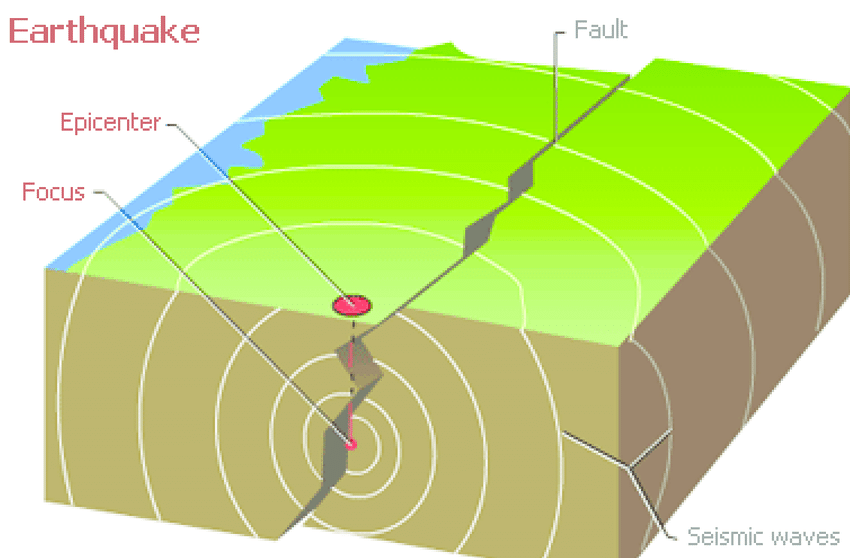Administration of the project
Early Mechanical Behaviors and Origins of Earthquakes
Hadrien Rattez, a research scientist in civil and environmental engineering at Duke University and Manolis Veveakis, an assistant professor of civil and environmental engineering at Duke University, have joined forces to create a model, which is capable of predicting early mechanical behaviors as well as the origins of an earthquake in various types of rocks.
Earthquakes are any sudden shaking of the ground due to seismic waves passing through Earth’s rocks. These seismic waves occur when large rock masses pushing against each other suddenly fracture and slip, releasing some form of energy.
Each year, the Earth experiences approximately 50,000 earthquakes that are large enough to be noticed without the use of instruments. Of those 50,000 earthquakes, almost 100 are large enough to cause substantial damage if they occur close to inhabited areas. Extremely large earthquakes typically occur approximately once per year. Since 1900, Earth has experienced around 100 earthquakes that caused serious damage and losses.
Recent major earthquakes include the 2018 earthquake in Hokkaido, Japan, which killed dozens of people and caused more than $1.7 billion in damages. In 2017, Mexico City and area experienced a 7.1 magnitude earthquake that killed at least 216 people and caused around $2 billion in damages. Ecuador experienced a 7.8 magnitude earthquake in 2016, which left 673 fatalities in its wake and an additional 2,500 injured individuals.
Due to the devastating nature of earthquakes, the ability to predict their occurrence is of extreme importance to all individuals around the world. Consequently, news of this model’s ability to predict the mechanical origins of earthquakes is widely appreciated as a step towards the ability to predict future earthquakes.
This new model is the first of its kind that is able to accurately model the decrease in friction as rock slippage speed increases. Machines built to simulate the conditions occurring within a fault allow researchers to experiment with forcing and twisting two rock discs against each with pressure reaching up to 1450 pounds per square inch.
Over time, the force of the rocks against each other starts turning the surface of the rocks into a type of gel (or even to melt). As this occurs, the coefficient of friction (the ratio between the force necessary to move a surface horizontally over another surface and the pressure experienced between the two surfaces) lowers, making movement between the two rocks easier. The speed at which the rocks move increases, and once that speed reaches one meter per second the friction levels drop dramatically. While scientists have known this for decades, this is the first model able to accurately simulate this process.
Rattez and Veveakis discuss their computational model, which accounts for the balance in energy between all the mechanical forces occurring during movement in the fault. Weakening mechanisms created by heat, which occur in all types of rock, are also taken into account.
Running multiple simulations indicate that the model is accurate in predicting the decrease in friction in all types of rock and at all possible fault speeds.
As the model works for all possible situations, it can provide scientists with improved knowledge regarding what occurs in a fault before an earthquake occurs. At this point, scientists can only calculate the probability that a significant earthquake will occur within a specific region within a certain number of years. As of yet, they do not have the ability to predict the occurrence of an earthquake. However, this model puts researchers one step closer to being able to actually predict the future occurrence of an earthquake.
Further details: “Weak Phases Production and Heat Generation Controls Fault Friction during Seismic Slip” by Rattez and Veveakis in Nature Communications, https://www.nature.com/articles/s41467-019-14252-5.




Be the first to comment